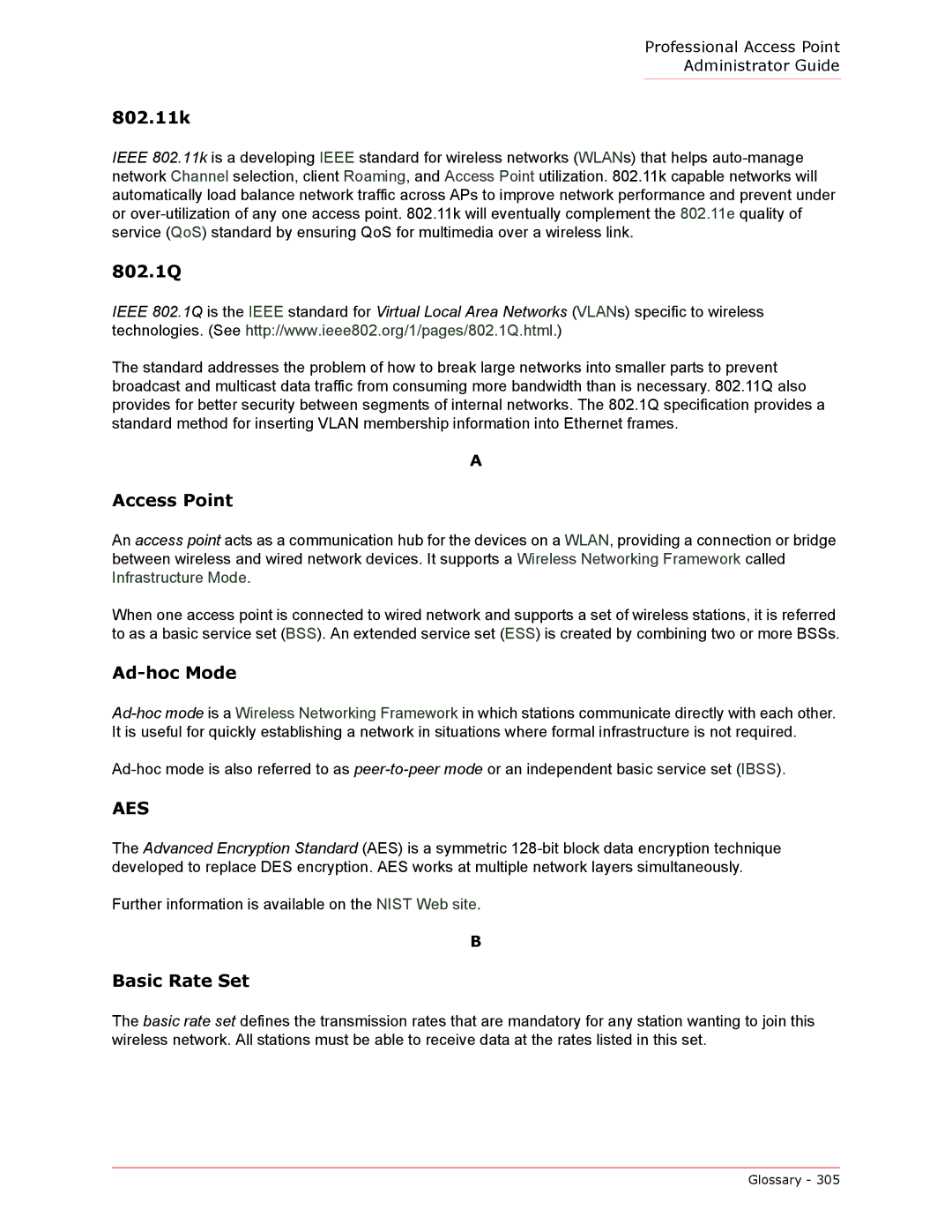
Professional Access Point
Administrator Guide
802.11k
IEEE 802.11k is a developing IEEE standard for wireless networks (WLANs) that helps
802.1Q
IEEE 802.1Q is the IEEE standard for Virtual Local Area Networks (VLANs) specific to wireless technologies. (See http://www.ieee802.org/1/pages/802.1Q.html.)
The standard addresses the problem of how to break large networks into smaller parts to prevent broadcast and multicast data traffic from consuming more bandwidth than is necessary. 802.11Q also provides for better security between segments of internal networks. The 802.1Q specification provides a standard method for inserting VLAN membership information into Ethernet frames.
A
Access Point
An access point acts as a communication hub for the devices on a WLAN, providing a connection or bridge between wireless and wired network devices. It supports a Wireless Networking Framework called Infrastructure Mode.
When one access point is connected to wired network and supports a set of wireless stations, it is referred to as a basic service set (BSS). An extended service set (ESS) is created by combining two or more BSSs.
Ad-hoc Mode
AES
The Advanced Encryption Standard (AES) is a symmetric
Further information is available on the NIST Web site.
B
Basic Rate Set
The basic rate set defines the transmission rates that are mandatory for any station wanting to join this wireless network. All stations must be able to receive data at the rates listed in this set.
Glossary - 305
